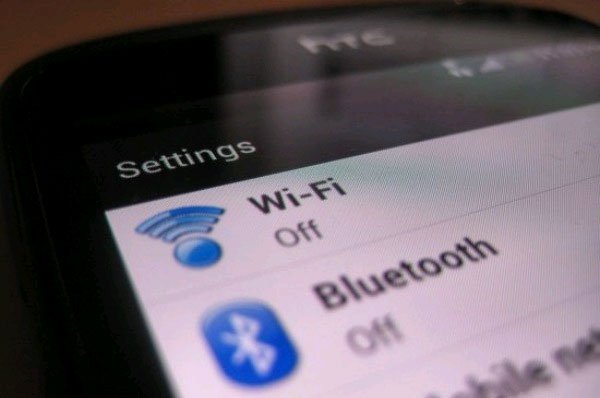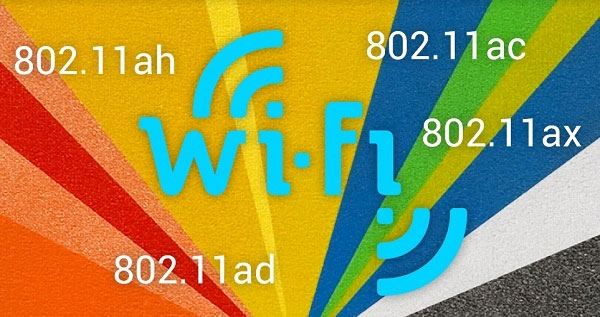New generation Wifi can reach speeds up to 10 Gbps
In the technology age, users are increasingly demanding faster connection speeds. According to the development roadmap, the next generation of WiFi standard may reach speeds of up to 10 Gbps.

The wireless network in the world was first introduced in the 1990s. Next, the 802.11a protocol was also recognized in 1999. This protocol allows transfer speeds of up to 54 Mbps, using use 5 GHz radio waves. Since then, standards for WiFi have been increasingly improved. So far, the latest WiFi standard is 802.11ac, which allows sending data at a rate of about 1.3 Gbps on the 5GHz band and 450 Mbps on the 2.4 GHz band.
So what will the next WiFi standard be? There have been several different development directions to answer this question. In particular, two key directions are to develop the next version of 802.11 ac and release new network standards, 802.11ax.
Until mid-2013, the new WiFi Alliance Association officially approved the standard for 802.11ac. However, there were earlier products that were produced based on the " draft " version of 802.11ac since 2012. Cisco said that we are currently in the " Wave 1 " phase of 802.11ac WiFi. As expected, the router in the "Wave 2" stage will be released in 2015. These products will use 5 GHz frequency band ( instead of 2.4 GHz as 802.11b / g / standard). n now ) and integrated MU-MIMO ( Multi User-Multiple Input / Multilple Output ) technology. In addition, it also supports multi-channel transmission combination. As a result, 802.11ac devices can transfer maximum data rates to more than 7 Gbps.
After the " Wave 2 " phase of 802.11ac standard, it will be the introduction of a new standard, 802.11ax. The primary goal of the new standard will be to quadruple the speed of network transfer to personal devices, not just to increase the overall network speed as in the previous standards. Huawei ( China ) has recently successfully tested 802.11ax data transmission at 10.53 Gbps on 5GHz band.

However, do not rush to celebrate, at least until now. Because the WiFi Alliance Association is expected to officially approve this new network by 2019. In addition, we may also see products using 802.11ax as soon as 2016. Of course, these devices will still use standard " draft " technology, just like 802.11n. " draft "and 802.11ac" draft ".
Good news for users of smartphones and tablets, they won't have to wait that long to own a new network standard device. Most of today's top products from big guys like Samsung, HTC, Sony and LG have supported 802.11 a / b / g / n / ac standards on both bands, 2.4 GHz and 5 GHz.
You should read it
- Which phones support Wifi 6?
- What is WiFi 6E? How is WiFi 6E different from WiFi 6?
- How to speed up Wifi network, increase WiFi signal
- Difference between WiFi 5, WiFi 6 and WiFi 6E
- Instructions for use and security of Wifi network
- What is Wifi? How does Wifi work?
- How to check who is using Wifi temple, your home WiFi theft
- What is WiFi 6? What is WiFi 6E? Things you need to know about WiFi 6 and WiFi 6E
May be interested
- WiFi will reach 1Gbps speed in 2012
 ieee has recently begun the first steps to vote on improving wi-fi standards implemented in two years.
ieee has recently begun the first steps to vote on improving wi-fi standards implemented in two years. - 11 best long-range Wifi routers 2018
 consumer wireless routers have many types depending on the wifi broadcast range. routers have a stronger wifi signal that allows devices to connect to higher speeds from larger and easier distances. so which router is the best?
consumer wireless routers have many types depending on the wifi broadcast range. routers have a stronger wifi signal that allows devices to connect to higher speeds from larger and easier distances. so which router is the best? - What is WiFi 6E? How is WiFi 6E different from WiFi 6?
 technology is always developing very quickly, when wifi 6 was just popular, the new standard wifi 6e was officially launched. so what is wifi 6e? wifi 6e is nothing different than wifi 6, invite you to find out.
technology is always developing very quickly, when wifi 6 was just popular, the new standard wifi 6e was officially launched. so what is wifi 6e? wifi 6e is nothing different than wifi 6, invite you to find out. - What is WiFi 6? What is WiFi 6E? Things you need to know about WiFi 6 and WiFi 6E
 help you better understand wifi 6 and wifi 6e, the differences of wifi 6e compared to wifi 6 and other devices using wifi 6e. join us to find out in the article below.
help you better understand wifi 6 and wifi 6e, the differences of wifi 6e compared to wifi 6 and other devices using wifi 6e. join us to find out in the article below. - Which is faster, WiFi or mobile data?
 in purely theoretical situations, there isn't a huge difference between 4g lte and wifi speeds. the commercial version specifications for both include a maximum speed of 1000mbps.
in purely theoretical situations, there isn't a huge difference between 4g lte and wifi speeds. the commercial version specifications for both include a maximum speed of 1000mbps. - FPT launched a new generation Wi-Fi modem with superior technology for Internet users
 what benefits will users enjoy from this new wifi modem device from fpt?
what benefits will users enjoy from this new wifi modem device from fpt? - The country with the most expensive WiFi fee in the world, a day's use is equal to a month's salary
 cuba has the most expensive wifi in the world, but internet speeds are so slow that it's hard to access for both locals and tourists.
cuba has the most expensive wifi in the world, but internet speeds are so slow that it's hard to access for both locals and tourists. - Learn about WiGig, the new super fast WiFi standard
 wifi 6 is about to be released, but that's not the fastest wireless technology you can get. wigig is designed to provide super fast speeds, within short distances also about to dock in 2019.
wifi 6 is about to be released, but that's not the fastest wireless technology you can get. wigig is designed to provide super fast speeds, within short distances also about to dock in 2019. - Confirm that the new Mac computer has gigabit WiFi connection
 the 9to5mac news site has just revealed that, through the latest version of os x, it can be said that the upcoming macbook generation will be equipped with super-fast wifi features.
the 9to5mac news site has just revealed that, through the latest version of os x, it can be said that the upcoming macbook generation will be equipped with super-fast wifi features. - 6 Wifi boosters, amplify the best Wifi wave 2020
 wifi tuners, wifi extenders or wifi amplifiers are devices that receive and transmit wifi waves with the same intensity as the original device and help expand the coverage.
wifi tuners, wifi extenders or wifi amplifiers are devices that receive and transmit wifi waves with the same intensity as the original device and help expand the coverage.










 Apple does not sell user information!
Apple does not sell user information! Samsung costs more money for Nokia's patent
Samsung costs more money for Nokia's patent Incognito mode in the browser is not as safe as you think
Incognito mode in the browser is not as safe as you think Does Google really want to buy Spotify?
Does Google really want to buy Spotify? Facebook currently has 399 million active people with mobile devices
Facebook currently has 399 million active people with mobile devices Facebook warns fake phishing site MH17 disaster
Facebook warns fake phishing site MH17 disaster